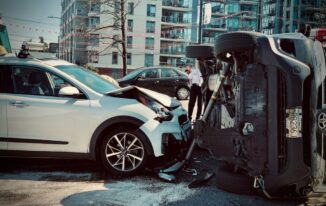
Property owners in Ontario are legally required to keep their premises reasonably safe for visitors. Whether it’s a private residence, a retail store, or a public building, failing to address hazards could lead to serious injuries—and legal consequences.
Under Ontario’s Occupiers’ Liability Act, anyone who controls a property (not just the owner) owes a duty of care to ensure the premises are safe. This includes repairing broken handrails, clearing ice, and properly maintaining walkways, lighting, and flooring. Neglecting these responsibilities may result in a premises liability claim if someone is harmed.
In such cases, working with a premises liability lawyer serving Ontario can help victims understand their rights and pursue compensation. These claims often hinge on proving that the injury could have been prevented if the property had been properly maintained.
Read on to learn how poor maintenance creates dangerous conditions and increases the risk of legal liability for property owners.
How Maintenance Failures Lead to Legal Trouble in Ontario
Poor maintenance is one of the most common causes of premises liability claims. When property owners or occupiers fail to keep their premises safe, they can be held legally responsible if someone gets hurt.
What the Law Says About Maintenance Obligations
Under Ontario’s Occupiers’ Liability Act, anyone who owns or controls a property must ensure it is reasonably safe for visitors. The law states:
“An occupier of premises owes a duty to take such care as in all the circumstances of the case is reasonable to see that persons entering on the premises… are reasonably safe.” – Occupiers’ Liability Act, R.S.O. 1990, c. O.2, s. 3(1)
This duty covers a wide range of maintenance responsibilities. Ignoring them can create dangerous conditions and lead to costly legal claims.
Common Maintenance Failures That Lead to Liability
1. Slip and Fall Hazards
Slip and fall accidents are among the most common reasons for premises liability claims. These often result from:
- Wet or slippery floors
- Loose tiles or torn carpeting
- Icy or snow-covered walkways
- Spilled liquids not promptly cleaned up
- Poorly maintained entryways
Even something as simple as a missing “wet floor” sign can lead to legal consequences if someone is injured.
2. Structural Hazards
Neglected structural elements can cause serious accidents. Property owners must regularly check and repair:
- Cracked or uneven sidewalks
- Broken steps or stair treads
- Loose or missing handrails
- Sagging ceilings or damaged flooring
- Potholes in parking lots
These types of defects are often considered foreseeable risks—meaning a reasonable property owner should have known about them and fixed them.
3. Poor Lighting Conditions
Inadequate lighting is another often overlooked danger. When pathways, stairwells, or parking lots are poorly lit, visitors may not see hazards in time to avoid them. Poor lighting can contribute to:
- Trips and falls
- Collisions with unseen objects
- Increased risk of assault or theft
If an injury or incident could have been avoided with proper lighting, the occupier may be liable.
Why Inspections Matter
Regular property inspections help identify risks before they cause harm. Failing to conduct inspections or ignoring obvious issues can be considered negligence.
To show they took reasonable care, occupiers should:
- Keep written maintenance logs
- Document all inspections and repairs
- Respond promptly to reported hazards
- Post warning signs around temporary dangers
Courts often rely on this type of documentation to assess whether the occupier met their legal obligations.
Commercial Properties Face Stricter Standards
Businesses and commercial landlords may have additional duties under Ontario’s Building Code Act and local municipal regulations. These laws set minimum safety standards for things like:
- Emergency lighting
- Fire exits
- Accessibility features
- Handrails and guardrails
- Floor load capacity
If a commercial property fails to meet these codes, it can be used as evidence of negligence in a liability claim.
Navigating the Legal Consequences of Poor Maintenance
Property owners should take their maintenance obligations seriously to avoid costly legal consequences. When maintenance failures lead to injuries, victims often seek compensation for medical expenses, lost wages, and pain and suffering. For property owners, these claims can result in significant financial liability and damage to their reputation.
Understanding the legal responsibilities under Ontario’s Occupiers’ Liability Act and related regulations is crucial. Regular property inspections, timely repairs, and addressing known hazards are vital to reducing the risk of an accident. By staying proactive and following safety standards, property owners can not only protect their visitors but also safeguard themselves from potential legal claims.



